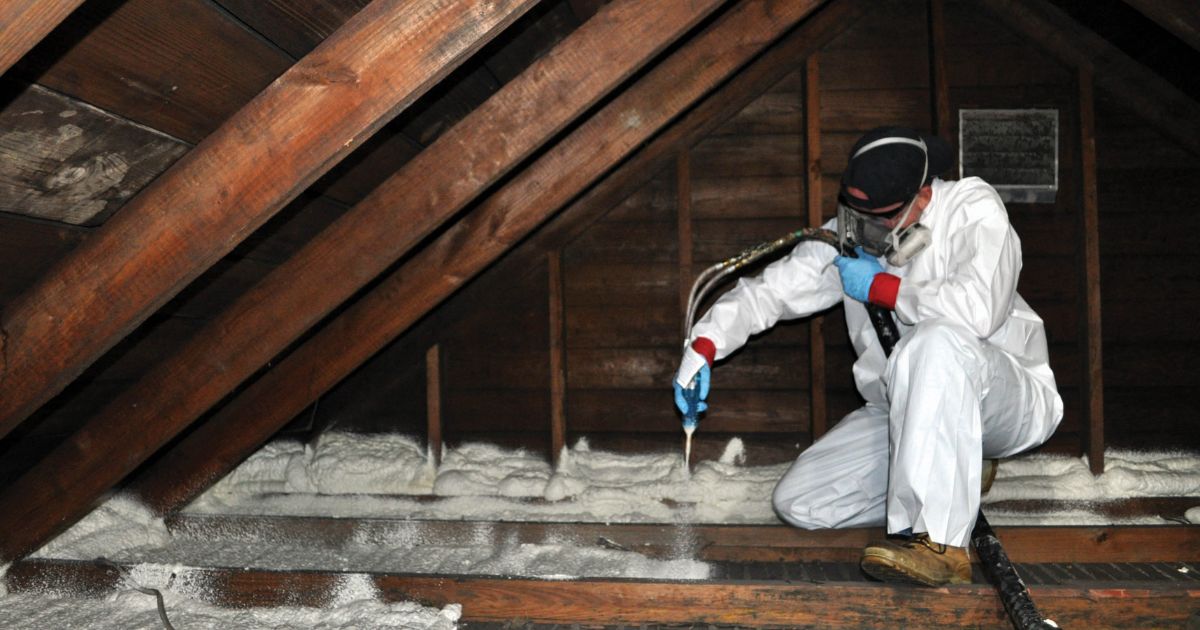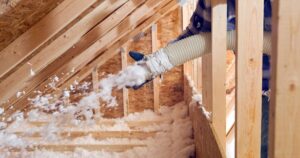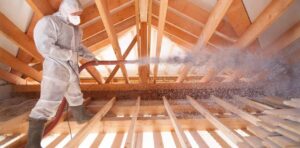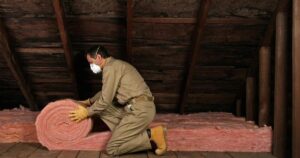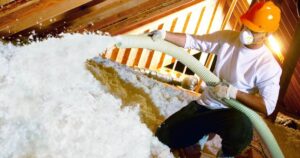Are you tired of fluctuating temperatures in your home, especially during extreme weather conditions? If so, you’re not alone. One of the most effective ways to combat this issue is by insulating your attic. Proper insulation can keep your home comfortable year-round and help you save on energy bills.
In this comprehensive guide, we will walk you through the process of spraying insulation in your attic, step by step.
Understanding the Importance of Attic Insulation
Before we dive into the process of insulating your attic, let’s understand why it’s so crucial. Attic insulation serves multiple purposes, including:
Temperature Regulation
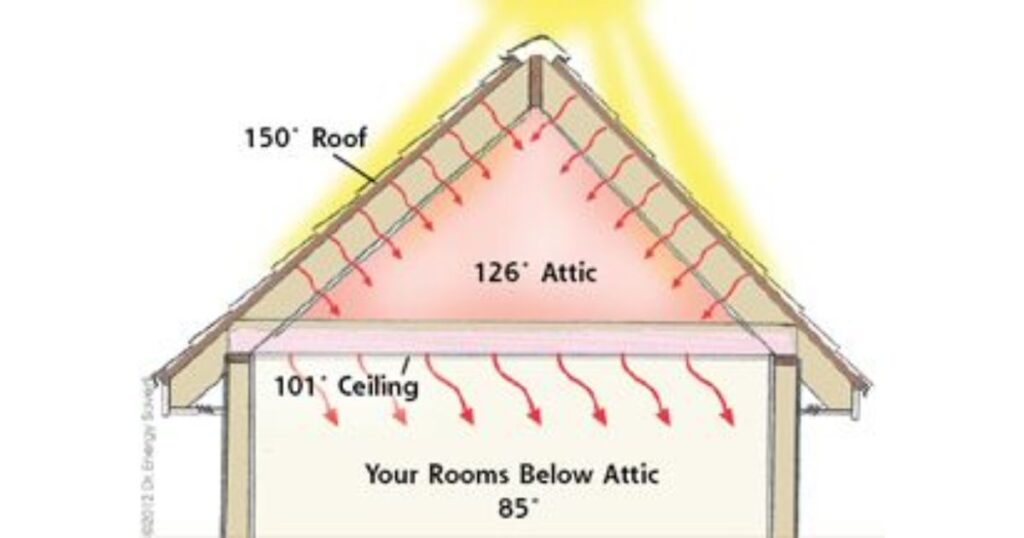
Insulating your attic can significantly improve the temperature control in your home. During the hot summer months, it keeps the heat out, and in the cold winter months, it keeps the warmth in.
Energy Efficiency
Proper insulation can lead to substantial energy savings. You’ll find your heating and cooling systems working more efficiently, reducing your energy bills.
Comfort
A well-insulated attic ensures a more comfortable living space by maintaining a consistent indoor temperature.
Now that you appreciate the importance of attic insulation, let’s get started with the steps to spray insulation in your attic.
Preparing for Attic Insulation
Safety First
Before you begin, ensure your safety by wearing appropriate gear: gloves, goggles, a mask, and coveralls.
Gather the Necessary Materials
You will need
- Spray foam insulation
- Spray foam insulation kit
- Caulk and caulk gun
- Utility knife
- Measuring tape
- Protective plastic sheeting
The Step-by-Step Process
Inspection and Cleaning
- Start by inspecting your attic. Check for any signs of damage or existing insulation that needs replacement.
- Clean the attic thoroughly, removing any debris, dust, and old insulation.
Seal Gaps and Cracks
- Identify gaps and cracks that need sealing. Use caulk to seal them, preventing air leakage.
Prepare the Spray Foam
- Follow the instructions on your spray foam insulation kit to prepare the mixture.
- Wear gloves and goggles when handling the mixture.
Start Spraying
- Begin spraying the insulation on the attic floor, making even and consistent passes.
- Work your way toward the eaves, covering the entire attic space.
- For the best results, apply insulation evenly, maintaining a uniform thickness.
Verify Thickness
- Measure the thickness of the insulation. Ensure it matches the recommended R-value for your region.
Benefits of Spray Foam Insulation
Superior Insulation
Spray foam insulation is known for its excellent insulating properties. It creates an airtight seal, preventing drafts and heat loss.
Longevity
Spray foam insulation can last for decades without deteriorating or losing its effectiveness.
Pest Deterrent
It acts as a deterrent to pests like rodents and insects.
Certainly, let’s continue with more information about attic insulation.
Tips for a Successful Attic Insulation Project
| Tip | Description |
| 1. Assess | Inspect your attic to identify insulation needs |
| 2. Choose Material | Select the right insulation material |
| 3. Safety First | Wear protective gear and work safely |
| 4. Seal Leaks | Seal air leaks and gaps before insulating |
| 5. Proper Ventilation | Ensure adequate attic ventilation |
| 6. Even Distribution | Distribute insulation evenly and uniformly |
| 7. Use Correct R-Value | Install the recommended insulation thickness |
| 8. Mind Vapor Barriers | Consider vapor barriers in humid climates |
| 9. Hire Professionals | Seek expert help for complex projects |
| 10. Energy Savings | Enjoy reduced heating and cooling costs |
Consider Hiring a Professional
While this guide provides a detailed DIY approach, insulating an attic can be a complex task. If you’re unsure about any step or if your attic has unique challenges, it’s a good idea to consult or hire a professional insulation contractor.
Safety Precautions
Safety is paramount during attic insulation. Avoid contact with the insulation material and ensure proper ventilation in your attic to prevent exposure to fumes. If you’re unsure about safety measures, consult the instructions on the insulation kit or seek professional advice.
R-Value and Climate Zone
The recommended R-value (thermal resistance) for attic insulation varies based on your climate zone. Consult your local building codes or an insulation professional to determine the appropriate R-value for your region.
Maintaining Ventilation
Proper attic ventilation is essential to prevent moisture buildup. Ensure that your attic has adequate vents and that they are not blocked by insulation.
Insulate around Obstacles
When spraying insulation, take care to insulate around ductwork, pipes, and other obstacles. These areas can be a source of heat loss and should not be overlooked.
Assess the Results
After insulating your attic, monitor your home’s temperature and energy bills. You should notice a significant improvement in both. If you don’t see the desired results, it might be worth revisiting the insulation job or seeking professional help.
The Environmental Benefits of Spray Foam Insulation
Apart from its energy-saving benefits, spray foam insulation is also environmentally friendly. Here’s why:
- Spray foam insulation minimizes your carbon footprint by reducing energy consumption, which in turn lowers greenhouse gas emissions.
- It can help you qualify for energy efficiency incentives and tax credits, making it a cost-effective and eco-conscious choice.
Wrapping It Up
Insulating your attic with spray foam insulation is an excellent way to enhance your home’s energy efficiency, comfort, and value. By following the steps outlined in this guide and considering the additional tips, you can ensure a successful insulation project. Remember, a well-insulated attic not only lowers your energy bills but also contributes to a more sustainable and eco-friendly living environment.
So, go ahead and take action. Make your home more energy-efficient and comfortable by giving your attic the insulation it needs. With this knowledge, you are now well-equipped to tackle the project and enjoy the benefits for years to come.
FAQs
Can I spray insulate insulation myself?
Spray foam acts as a great insulator and vapor barrier, but it’s made up of chemicals and needs to be handled with care.
Is spray foam in attic safe?
After proper curing, spray foam insulation is safe and should not cause any health-related or even structural problems on your property.
Why is spray foam so expensive?
Spray foam insulation is a premium product because of its high performance.
Conclusion
Insulating your attic with spray foam insulation is a smart investment in your home’s energy efficiency and comfort. This comprehensive guide has provided you with the necessary steps to complete the process effectively.
By following these steps, you’ll ensure a well-insulated attic that keeps your home comfortable year-round and lowers your energy costs. So, don’t wait any longer; it’s time to give your attic the insulation it deserves.

